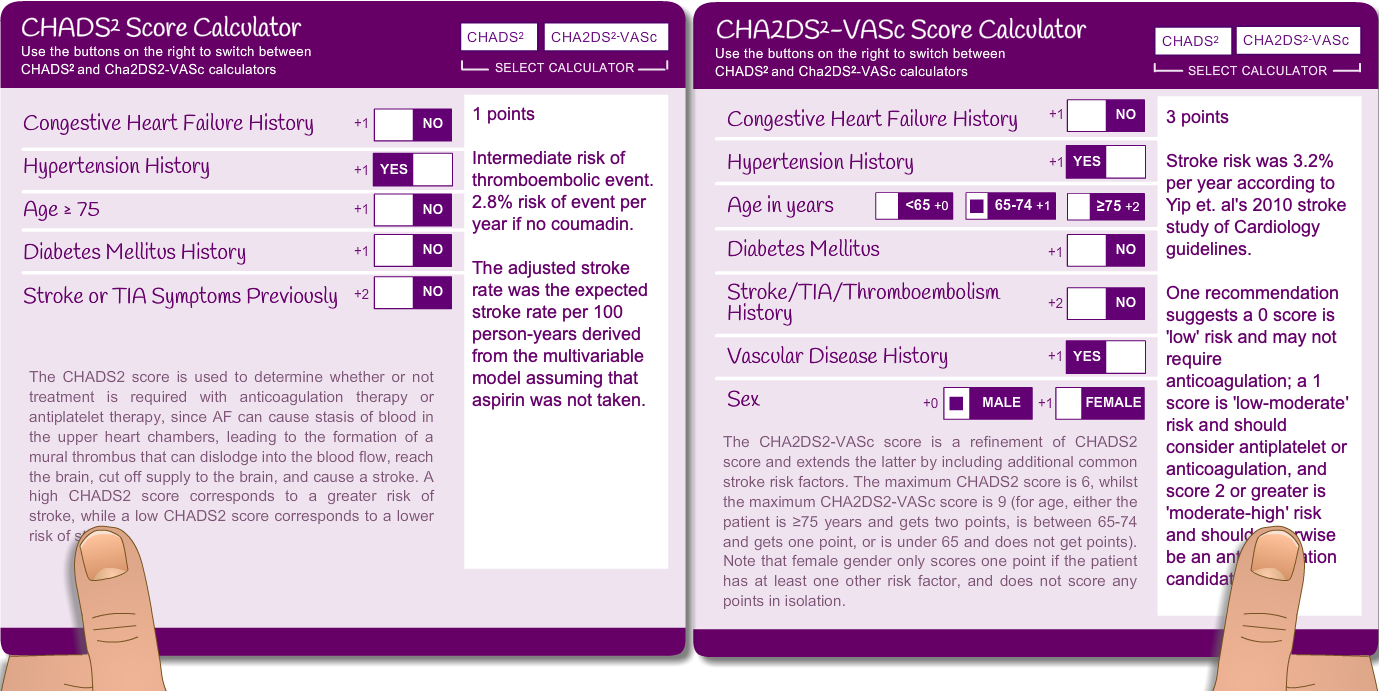
CHADS2 Score Calculator
- Congestive Heart Failure History – NO
- Hypertension History – YES (+1)
- Age ≥ 75 – NO
- Diabetes Mellitus History – NO
- Stroke or TIA Symptoms Previously – NO
1 points Intermediate risk of thromboembolic event. 2.8% risk of event per year if no coumadin. The adjusted stroke rate was the expected stroke rate per 100 person-years derived from the multivariable model assuming that aspirin was not taken.
The CHADS2 score is used to determine whether or not treatment is required with anticoagulation therapy or antiplatelet therapy, since AF can cause stasis of blood in the upper heart chambers, leading to the formation of a mural thrombus that can dislodge into the blood flow, reach the brain, cut off supply to the brain, and cause a stroke. A high CHADS2 score corresponds to a greater risk of stroke, while a low CHADS2 score corresponds to a lower risk of stroke.
CHA2DS2-VASc Score Calculator
- Congestive Heart Failure History – NO
- Hypertension History – YES (+1)
- Age in years – 65-74 (+1)
- Diabetes Mellitus – NO
- Stroke/TIA/Thromboembolism History – NO
- Vascular Disease History – YES (+1)
- Sex – MALE
3 points Stroke risk was 3.2% per year according to Yip et. al’s 2010 stroke study of Cardiology guidelines. One recommendation suggests a 0 score is ‘low’ risk and may not require anticoagulation; a 1 score is ‘low-moderate’ risk and should consider antiplatelet or anticoagulation, and score 2 or greater is ‘moderate-high’ risk and should otherwise be an anticoagulation candidate.
The CHA2DS2-VASc score is a refinement of CHADS2 score and extends the latter by including additional common stroke risk factors. The maximum CHADS2 score is 6, whilst the maximum CHA2DS2-VASc score is 9 (for age, either the patient is ≥75 years and gets two points, is between 65-74 and gets one point, or is under 65 and does not get points). Note that female gender only scores one point if the patient has at least one other risk factor, and does not score any points in isolation.
Page last reviewed: 29 Jul 2020


